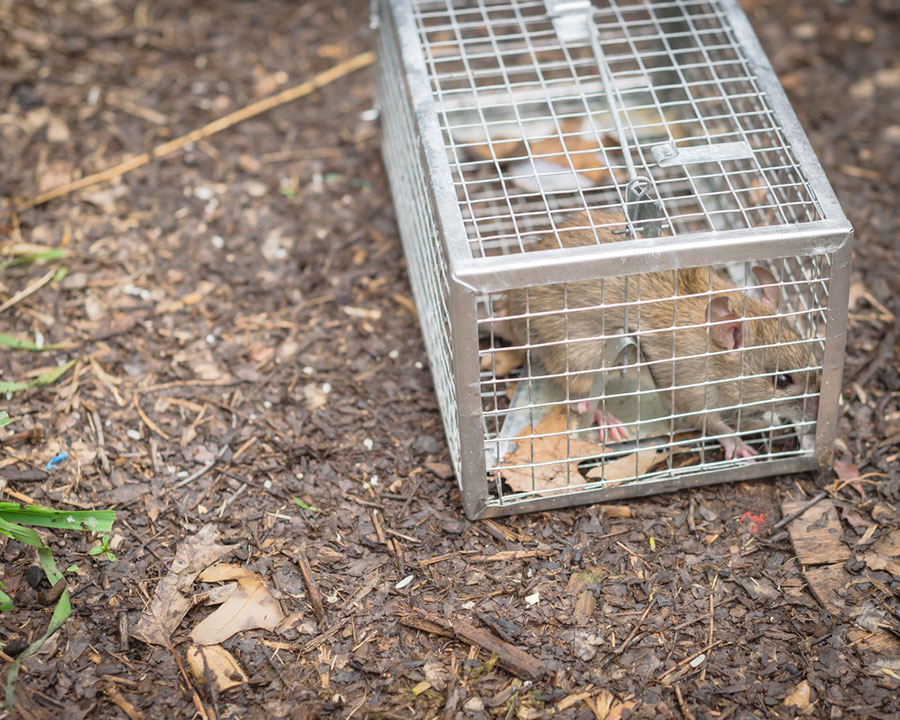Wildlife Trapping: Keeping Pests Out of Your Home

Animal trapping, or simply trapping, is the usage of equipment to capture an animal remotely. Trapping animals can be done for a number of reasons, including food, the fur trade, hunting, pest control, and wildlife management.
The most humane method of capturing nuisance animals is live trapping. Skunks and raccoons, for example, will be live captured if they have established a home in your chimney or beneath your porch. Live trapping is not practiced on smaller pests like rats, moles, and so forth.
Humane traps are not harmful to animals in any way, but if you realize an animal has been trapped, you must notify the business that placed the trap so they may come out and let it free, away from your home.
Live trapping isn’t always as simple as it seems; there might be problems in capturing the animal. If the unwanted animal has been captured previously, they may refuse to enter the trap since they are aware that it is a trap.
If this is the situation, it may be advised that the animal must be removed through another approach to capture the animal. Before you proceed with wildlife trapping, you should consider the following:
- Skunks, woodchucks, and other animals may seek refuge near or in your home during the months of March and August, as this is their breeding season. They’ll want to give birth in a dark, secluded spot and then raise their children.
If an animal has established a nest in your home between these months, attempt to determine if it is a mother. Even if you never see the babies, this does not indicate that the animal does not have a nest with dependent young.
- Capturing and rehoming the animal in its natural habitat sounds like a fantastic idea, but depending on the animal, it might be fatal. Placing any animal in an unfamiliar environment will make it disoriented and slow to adjust, but for some animals, such as squirrels, releasing them into a different wooded region might end in death.
Squirrels spend a lot of time gathering food and saving it for the winter. If you capture and rehome a squirrel, it will lose all of its stored food and may die as a result. Any animal placed in an unfamiliar area will be perplexed and will not know where to locate food, water, or shelter.
- If you have an opossum in your yard or house, capturing and rehoming it is much easier. If an opossum is a mother, she will carry her young on her back, making it unlikely that she would be separated from them. Opossums are also wandering creatures with no set home, thus introducing them to a new habitat is unlikely to harm them.
Patience is key when it comes to live trapping. If the animal is not causing any harm or damage to you or your home, give them some time and they may go.
Here are a few ways to keep animals out of and away from your home:
- Close all entry points.
- Trim back the trees around your house so they can’t get to your roof.
- Trim back bushes to verify that there are no hidden access spots.
- Make sure garbage can lids are tight and don’t leave food out in your yard.
